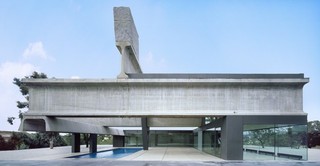Structural Design II
The courses Structural Design I and II explain the fundamentals of how structures function. These courses put great emphasis on studying the relationship between the form of a structure and the internal forces within it by means of graphic statics.
Beams
In this exercise, the distribution of internal forces within beams is examined. First for the simple beam, then for beams with different support conditions and cantilevered beams. For this purpose, arch-cable and truss analogies are used, i.e. the acquired knowledge about arch-cable structures and trusses is applied.
Beams
Beams are bar-shaped building components that are loaded perpendicular to their axis. The main types of stress in beams are tensile stresses on one exterior face and compressive stresses on the other exterior face of the beam.
The distribution of the internal forces can be designed by connecting cable polygons and cables which are thought to run within the section of the beam with additional compression members. Thus, the structural boundary conditions at the supports are met as there are only vertical reaction forces.
With regards to transferring the internal forces, the beam is infinite-fold statically indeterminate. Therefore, there is not one singular solution, but an infinite number of solutions, resulting in more freedom for the designer. However, it is critical that the conditions for equilibrium are not infringed on in any part of the structural element. The internal forces have to be in equilibrium with the external forces.
7.2 Force Flow in a Beam: Node by Node
7.3 Force Flow in a Beam: Superposition
Intersecting Bars
For most cases in graphic statics, for each member in the form diagram, there is a corresponding member in the force diagram. This is the case if there are no intersecting members in the form diagram. If there are intersecting bars in the form diagram, the corresponding bars often have to be drawn in duplicate.
